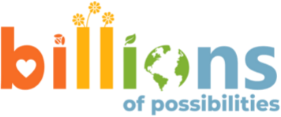Invitation
Do I know that my solution works?
While that feels like a straightforward question with a clear answer out there for us to find, it turns out to be so much more complicated!
How do we define what it means for our solutions to “work?”
Who do they work for? And who gets to decide?
This module’s material helps us explore the ways we’ve seen measurement and evaluation go wrong and offers resources to move in the right direction.

Task #1: Are You Evaluating Success with an Equity Lens?

Review this document that overviews the 8 ways The Billions Institute and Equity Meets Design have seen measurement and evaluation projects go wrong.
Do any of these resonate with your organization’s approach? Explore some of the resources to identify ways you can strengthen your approach.
Use the handout in your packet to capture your reflections and how you might tweak your evaluations process to be sure your solution really is worth scaling!
Inner Work: Reflections on Module 6
In venture capital and engineering, efficiently figuring out whether your solution works is sometimes referred to as “retiring risk”– the savings are measured in time and money with the goal of knowing when to change course or abandon a given project. If your work aims to address conditions created by systems of social, political and economic exclusion or domination (misery at scale, i.e., oppression), the risk to people experiencing and working everyday to survive those conditions are substantially higher than just having an unprofitable portfolio or a delayed product line.
For a person living on the edge, loss of time, money, even hope can be catastrophic or life-threatening to themselves and to their family. This is why it is so important– actually an ethical obligation– to ask yourself after completing this week’s tasks if you are really ready to scale your solution.
As a reflection, what body sensations and emotions did you notice as you tried to evaluate your solution’s readiness? What do you think the source of those sensations and emotions are? Are there ideas, aspirations, fears or previous experiences that might be showing up for you individually as you assess your solution? And how do the moral stakes show up for you?
Next Steps

Do I have evidence that the solution I’ve created solves the problem? For folks at the margins? Without creating or exacerbating issues? Do people most proximate to the problem agree?
Once you are sure that your solution works (or that you have a plan for how you can find out if it works) for folks who are most proximate to the problem, you’re ready to move on.
Bonus Material: Additional Thoughts on Equitable Solutions Finding
For those of you who are still endeavoring to land on your actual solution: fear not! Here is a short video with some additional thoughts about equitable solutions finding in case that’s something that you need to dig a little deeper into. Prototyping, rapid testing, facing into the data…there’s so much more if this is what you need.
